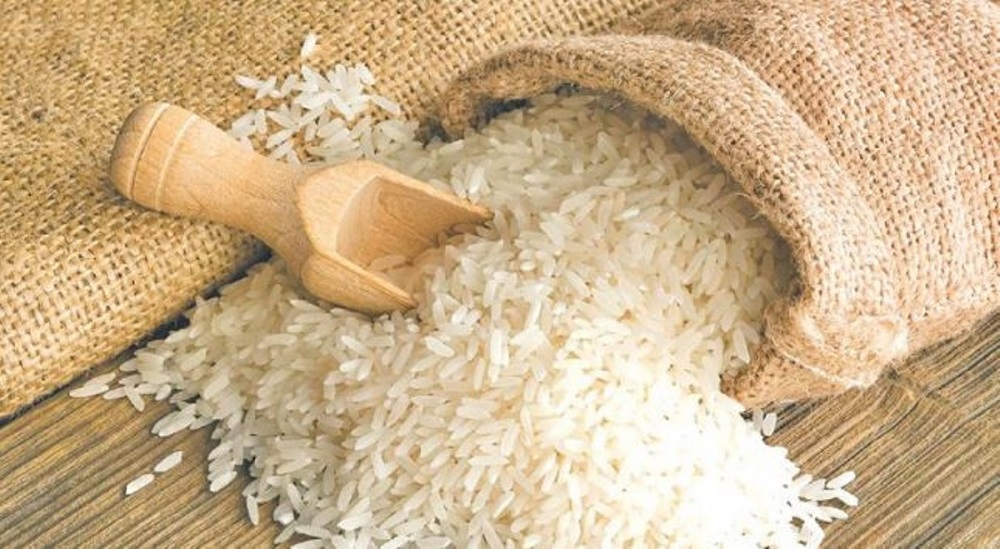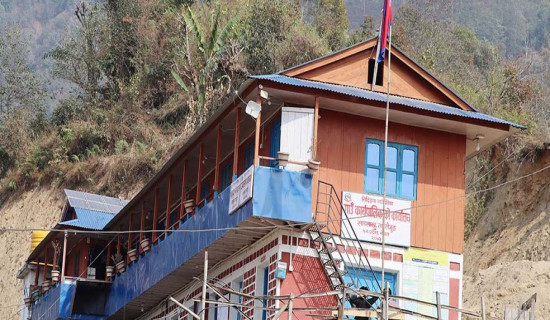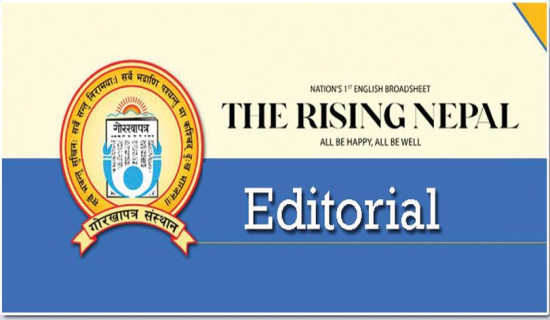- Thursday, 11 September 2025
Rice traders hike price of staple cereal as India bans its export
By Laxman Kafle,Kathmandu, Aug. 6: The price of rice in Nepal has soared as soon as the decision of the government of India to ban rice export.
Under the pretext that India has banned exports, the businessmen of Nepal have started selling the already imported rice by increasing the price. Taking advantage of India’s decision of July 20 to ban exports of all types of white rice except Basmati, they raised prices suddenly.
The government of India banded exports of non-Basmati white rice in an attempt to rein in rising prices at home.
In the last one week, the price of a bag of rice weighing 20 kgs has increased from Rs. 200 to Rs. 250, said Pavitra Bajracharya, president of Retailors’ Association of Nepal.
The price of fine rice has increased by Rs. 200 per bag and coarse rice by Rs. 200 to Rs. 250 per bag within a week.
“A kg of rice has been dearer by Rs. 10-15 based on the varieties in a short period,” he said.
The price of jeera fine rice which cost Rs. 80 per kg a week ago has increased to Rs. 90 and coarse rice which cost Rs. 62 has started selling at Rs. 76 in the market.
“The claim of the wholesalers to hike the price of rice is not reliable in this context because there is no import of rice at present. The wholesalers are trying to take advantage of the ban on export of rice imposed by India,” Bajracharya told The Rising Nepal.
He said that retailers have not raised prices, but because importers and suppliers have raised prices taking the benefit of this situation of stopping the imports from India.
“We, the retailers, sold the rice in stock at the old price. However, when we buy rice from importers and wholesalers, the price has increased, so we are forced to sell according to the purchase price adding the profit margin based on the rules,” he said.
He said that the government should inspect the wholesalers’ and importers’ warehouses instead of only focusing on retailers to control the artificial price hikes as the retailers are only the mediators to supply goods to the consumers.
The Department of Commerce, Supplies and Consumer Protection has already started market monitoring to find out the reason behind the price hike of rice over the past few days.
The Department has instructed rice millers and industrialists and wholesalers to submit the reasons for the increase in the price of rice.
“Due to recent unnatural price hikes of rice, general consumers who survive on limited income are in trouble. The purchasing power of people has reduced after the COVID-19 pandemic. Business of grocery shops has not increased despite price hikes as the consumption even of the essential items has been reduced,” he said.
Dependency cause of price hike
Devendra Bhakta Shrestha, President of Nepal Food Grocery and Wholesale Entrepreneurs’ Association, said that the wholesale price of rice has increased by up to Rs. 100 per sack depending on the brand.
“The price of rice has increased in the local market due to a hike in the rate of imported paddy from India. The traders are importing paddy even with India imposing a ban on the export of rice, except Basmati,” he said.
“We are dependent on imports, it is natural that after the importing companies increase the prices, others will follow suit,” said Shrestha. “The government should take immediate diplomatic initiatives to solve the problem.”
He expressed his belief that the government of Nepal will take initiative to open the import of rice from India and that India will also allow for the export of rice to Nepal as Nepal and India have not only the relations of trade and neighbours but also deep cultural and historical relationship.
He, however, said that if the government did not open the ban immediately through diplomatic initiatives, the price may increase further.
Rice and paddy worth Rs. 36.66 billion imported The paddy and rice worth Rs. 36.66 billion had been imported in the last fiscal year 2022/23.
According to statistics of the Department of Customs, 557,752 tonnes of paddy worth Rs. 20.75 billion and 233,979 tonnes of rice worth Rs. 15.91 billion were imported in the review period.
Nepal mainly imports rice from India. So, India’s decision to ban exports seems to affect Nepal.
According to the statistics, the import of rice and paddy in total decreased in the last fiscal year as compared to the previous fiscal year 2021/22. The country imported paddy and rice worth Rs. 47.57 billion in the previous fiscal year.
The country imported 578,767 tonnes of rice worth Rs. 30 billion and 551,749 tonnes of paddy worth Rs. 16.99 billion had been imported in the fiscal year 2021/22.
Even if the government of India bans the export of rice, Nepal can focus on the import of paddy to meet the national demand, said Shrestha.
Due to low production instead of growing demand for rice, it is a compulsion for the country to import rice to meet the demand.
Nepal produces around 5.48 million tonnes of paddy. In the meantime, due to weak plantation this year than the past, the production of paddy might be affected this year.

















